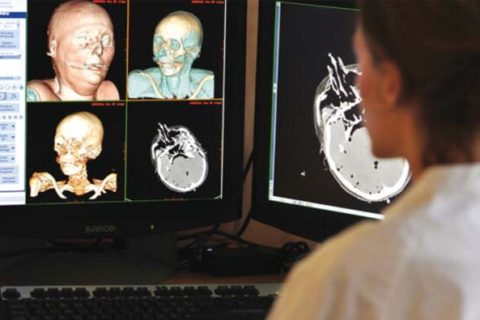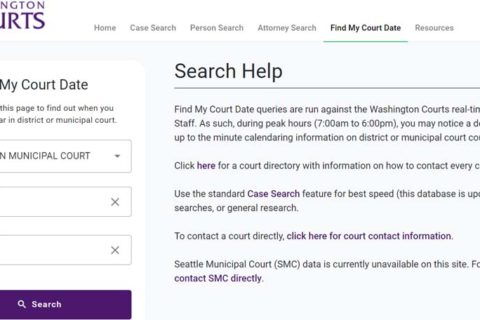The law enforcement officers usually use methods like situational crime prevention (SCP) to protect those in their community before crime happens. By the way, what is situational crime prevention? And who came up with this situational crime prevention theory? Well, let us talk about that information here.
Although you may not have heard the term situational crime prevention (SCP) before, actually this technique has a history which stretches back more than 40 years. Now, situational crime prevention (SCP) is used by police departments around the world. Improve your knowledge about situational crime prevention (SCP), how it works and examples of real-life crime prevention.
What is Situational Crime Prevention (SCP)?

Based on the research, crime prevention has long been on the radar of law enforcement officers. However, situational crime prevention (SCP) brings a different approach. Need to note that Situational crime prevention (SCP) is based on the belief that crime will be able to be prevented by making strategic changes to an environment. It did by focusing on how crime occurs, and how it can be prevented.
According to research by Auzeen Shariati and Rob T. Guerette, traditional criminology has focused on the criminal nature of the offenders as a means to reduce crime. Situational crime prevention (SCP) has instead sought to change environments that host crime behavior to make them less suitable for offending.
Emily Andrews, law writer at RecordsFinder said that the law enforcement officers evaluate different kinds of crimes to decide which situational factors allowed the crime to be carried out. Then, intervention techniques are developed to be utilized in similar situational factors. In theory, these actions and techniques will be able to reduce the crime rate during specific types of events.
Who Came Up with Situational Crime Prevention Theory?
Situational crime prevention (SCP) focuses on the settings where crime happens, rather than on those who commit specific criminal acts. The emphasis is on managerial and environmental change which reduces chances for crimes to happen (Clarke, 1997). For your information, Situational crime prevention (SCP) is based on two related theories.
- Rational choice theory (Felson & Clarke)
This theory states that potential offenders rationally select to commit crime, and also the methods used to do so. This option is influenced by the offender’s need to maximize reward while minimizing risk.
- Routine activities theory (Cohen & Felson)
This theory states that, in order for a crime to happen, there must be the presence of three linked elements; motivated offenders, suitable targets and the absence of capable guardians. Capable guardians are able to include people such as the police or security guards, as well as environmental factors, such as locks or other security tools.
Need to know that Situational crime prevention (SCP) aims to boost risk and/or minimize reward, so that making the commission of a criminal act too difficult, or the reward for committing the act too low to risk being caught. Increased risk is able to be reached by minimizing the number of suitable targets or adding the capable guardians.
We get information that Cornish and Clarke (2003) produced 25 techniques of situational crime prevention (SCP), which detailed various kinds of interventions to reduce crime. The 25 techniques of situational crime prevention (SCP) were split into five specific groups:
-
- Increasing the effort
- Increasing the risk
- Reducing the rewards
- Reducing provocations
- Removing excuses
Interventions related to neighborhood crime explained in this report tend to fall into the increasing effort and increasing the risk categories. For further information, you are able to read other articles about the 25 techniques of situational crime prevention.
A similar concept to situational crime prevention (SCP) is crime prevention through environmental design or CPTED. You have to know that crime prevention through environmental design (CPTED) and situational crime prevention (SCP) are concerned with changing the environment to reduce chances for crime. Crime prevention through environmental design (CPTED) is associated with design solutions which frequently focus on architecture and planning. Also, it is known as designing out crime (Cozens and Love, 2015). While situational crime prevention (SCP) tends to be broader in nature, referring to any opportunity-reducing measure which has the potential to improve the difficulties or risks of offending (Clarke, 1989).
How Does Situational Crime Prevention (SCP) Work?
What makes situational crime prevention (SCP) different from other prevention methods is its focus on the specific circumstances where the actual crimes have happened or are likely to happen. Occasionally, it is referred to as near crime. SCP or Situational crime prevention seeks for reducing the harms caused by crime through altering immediate or situational factors in the environments where crime regularly happens.
The law enforcement officers trained in situational crime prevention (SCP) learn 25 techniques to assist prevent these kinds of situational crime. A crucial part of situational crime prevention (SCP) focuses on decreasing the benefits crime offers. The goal of situational crime prevention (SCP) is to reduce the incidence of crime by improving the risks for the offenders and reducing the chances for crime,” which is exactly what those techniques are designed to do.
As we explained above, those 25 techniques fall into five categories: increasing the effort required to commit a crime, increasing the risks of committing a crime, reducing the rewards of crime, reducing provocations to commit an offense and removing excuses for breaking the law. Also, those techniques can be thought of as hard interventions which make it impossible for an offender to commit a crime, and soft interventions which decrease an offender’s motivation to commit a crime.
Based on some of the 25 techniques law enforcement officers are trained to use, below are several examples of what SCP looks like in action:
- Removal of target
Parking an exuberance car in a garage rather than on the street where vehicle break-ins or auto theft are a problem.
- Improve natural surveillance
When urban planning, including well-lit streets and housing designs which allow neighbors to see one another’s properties.
- Control weapons
Restricting the purchase of the weapons, or not allowing juveniles to buy spray paint.
- Improve formal surveillance
Install security cameras in conspicuous places so the offenders are aware of any surveillance measures.

A bookworm and researcher especially related to law and citizenship education. I spend time every day in front of the internet and the campus library.





